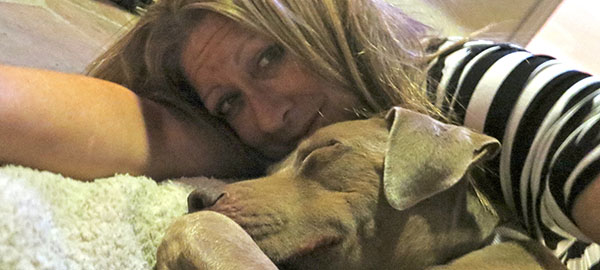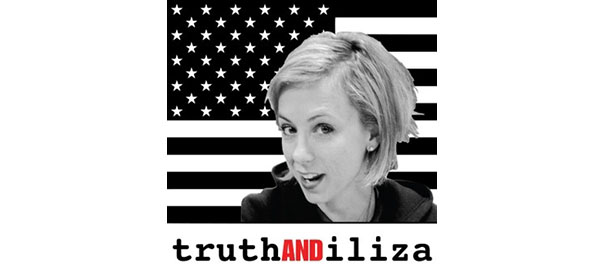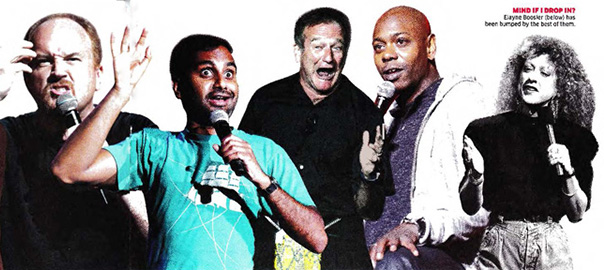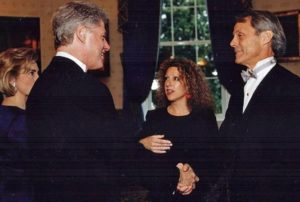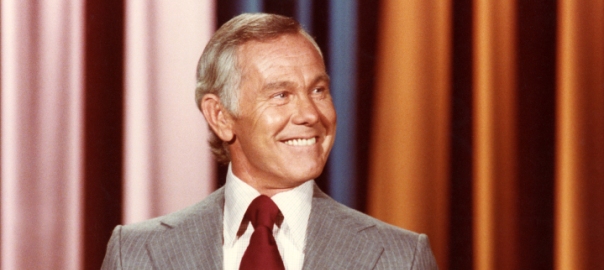Elayne Boosler
Tails Wag With Joy For Her Comedy For A Cause
By Lori Golden
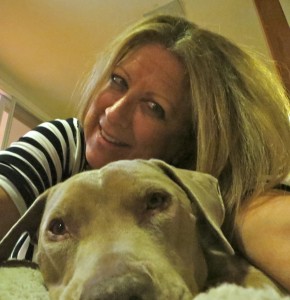
Born and raised in Brooklyn, New York, Elayne is basically bi-coastal, shuttling between LA, the Big Apple and all points in between. When asked which city she thinks is best for pet lovers she replied, “If it’s between NY and LA I’ll say NY, which may be counter intuitive to people who think there’s open land out here and more houses and more space, but NY is definitely more pet friendly. There are many more places to enjoy the outdoors with your pets; they’re welcomed on restaurant patios in NY; and there isn’t a store you can walk by in NY anymore where there isn’t a dog water bowl outside. They also have a fantastic homeless outreach program in NY where they offer people who are homeless all this monthly pet care – which gets them in off the street, and subsequently they are cared for too without really knowing it because they won’t come in for that. So it gives the city a big leg up on helping the homeless through helping their animals, which is a fantastic thing.”
“What has changed here in LA is the incredible rescue community that fights for getting the pet stores closed; getting them to sell animals from the shelters; getting them to let us claim animals before they kill them. It’s the animal community in LA that is so spectacular and that seems to be where all the forward steps are made.”
Elayne’s love of animals came from her very first dog, a purebred Boxer named Carbide. “He was my first password,” she says. “I was 4, so I looked up into these nostrils and ran! I was terrified, because my mother instilled fear in us of animals. It was the most frightening, horrible couple of weeks of my life until I fell in love with him. He was everything to me. Needless to say I was raised by the Taliban in Brooklyn and left home very early, and my ally was this dog. I didn’t leave home until he died at 13. He was the only tenderness, the only love, the only softness, the only protection I really had. When I explained my life to a shrink she said there had to be someone who taught you empathy and love because… someone had to be there to teach you to be a human being, which you really are. And I said it was the dog. And she said yes, that’s absolutely acceptable.”
These days in addition to her busy stand-up schedule that takes her around the country, Elayne also runs her own animal rescue organization – Tails of Joy (www.tailsofjoy.net). Before that, however, she said, “I wanted to learn everything I could about rescue and spent five years with Boxer Rescue. I was on their Board, I walked dogs, did the medicines, learning what rescue really means. I went to their adoption events and took dogs on the FOX Morning News once a month for years. I eventually got them the full down payment for their Sun Valley kennel which could house a hundred dogs, and they really got big, fast, which was fantastic. I always knew I wanted to help the little guys, who really needed it, and that’s what they were when I got there, so I was glad to leave them in such fantastic shape and turn my attention back to the little guys in need. That’s what Tails of Joy is.”
“Our mission statement is we help the smallest, neediest rescue groups across the country and beyond. And that’s what I do.”
Besides performing, Elayne raises money in numerous ways for her Tails of Joy rescue. On her website she sells jewelry that has been specifically designed and manufactured for Tails of Joy. “You won’t see it anywhere else,” she explains. “And there are other items also made special for us by wonderful sewing and quilting angels from all over the country. In addition to shopping, people can make donations through the website… even monthly, $5 dollar donations. We also use social media a lot to raise money and tell people we have new items. Those monthly donations – people apologize for only donating $10 a month – I beg them not to apologize. If everyone donated $10 a month we could plan ahead, we’d never run out of money, we’d know what was coming up. $10 a month would make our work possible forever! It’s not little, it’s HUGE!”
“At my shows I talk about Tails of Joy, they see the items, I encourage them to go to the website to buy them. When I’m not in their town they can earmark what rescue they want their purchase price to go to. I make it so interactive. If you want to buy jewelry from us and want your rescue in Texas to get the money, just tell us and we’ll send it to them. Tails of Joy doesn’t raise money for itself. We don’t keep a bank account. Everything that comes in goes out… that week. Basically we just want to know where you want that money to go to. Initially because I was on the road all those years and I would see three little old ladies in Ohio saving more cats and dogs than the entire bloated Humane Society of the United States, I knew they did the work but didn’t have the fundraising infrastructure. I really wanted to set this up to keep people like that going.”
“Most places I perform are not about animal rescue – they’re just gigs,” Elayne continues. “But what I do is this: I’m headed for Chicago so I’ll be choosing two rescues there, as I do in every city to join in our advertising, to have free tickets to a show, because rescuers burn out. They will wear their shirts. They’ll bring all their info. They’ll bring their products. I end with all the animal stuff on stage and I introduce them from the audience and tell the audience we’re all going to be in the back. I’ll sign everything. They will sell their stuff and give out their info and every penny we take in stays in the city in which I’m playing. I make that clear on stage so people understand whatever they buy is going to help local Chicago rescues that night. And we put out a donation jar and people ask, ‘is it really staying here?’ I say here are your people. They smile and they throw in money and buy more than they would and we leave it all behind in each city. So that’s where the money goes when I’m on tour.”
“Then those rescues are added to our Little Guy Grants page on our website and we constantly funnel money back into rescues I’ve seen. I always visit their facilities and meet the people. Ones that are struggling, working hard, small… we always keep them in the hopper and often donate several times a year once we’ve met them in person.”
“Here’s another great thing I started because so many people on Facebook and Twitter now need help who have supported us. Our new thing is get your money back. We’ve been here for 14 years so far; we’re not going anywhere. If your pet needs help and you have supported us, I go through the records and find every donation you have ever made and start by giving that back to you in total. That’s our first donation to you, and then we look at what we can do after that. Once you’ve shown your support we will bend over backwards for you. It really is like a great Pet Savings account – that money is put away for you.”
The newest aspect of Tails of Joy is the Edith and Julie’s Spay and Neuter Fund. “Mostly what I do all day is call veterinarians across the country,” Elayne explains. “Whether it’s for a group or a person. I’m certainly not going to send an individual money. So I talk to the vet and also ask about previous care by this pet owner. Is this a good pet owner? Is there a history or did they just find you last week? I also demand a rescue discount, which often works, but not always. The only other thing we’ll do for individuals if we really scope it out and it’s real is I will go to Amazon and send food, or medicine. We will get them what they need if we can. And now we’ve added spay and neuter support.”
If people live in an area where there is no low cost spay/neuter services, they can contact Elayne through her tailsofjoy.net website or Facebook page. “We also try to work with the vets to encourage a greater discount if we can send fifty or a hundred people to them,” she says. “I’m hoping this will be self-funding, which is why I haven’t given it all away in three minutes. I’m trying to find a way to have this spay and neuter fund grow and get matching funds… that’s what I have someone working on now. We’ve only given out a few different grants of only about $2500 dollars each, which isn’t much. But, for instance, there’s an area outside of LA where they aren’t allowed to use government money for stray cat funding… so with $2500 we started their little fund for quietly doing the stray cats.”
“As far as how I decide who gets money, it’s very haphazard, I’m ashamed to say, however it seems to work well. Like I said, the smallest, neediest rescue groups across the country. I must get 500 emails a day – I’m on every list. We’re not big enough to have to vote with a Board to see who gets this money (which also holds it up for a month and then the dog is dead due to missed surgeries.) It’s very hands-on. I just start looking at the needs. Basically it’s where will we get the most bang for the buck. A lot of it is ‘my dog needs knee surgery for $3,000 dollars.’ What I do is look at what the person is doing herself to help her own animal get the surgery – are you trying to sell a few things? Are you having a car wash? And that’s who I help.”
People can reach Elayne through her website. “Everyone seems to find me,” she says. “It’s either info@tailsofjoy.net, or elayne@tailsofjoy.net. And a lot of them have come through the Tails of Joy Facebook page or on Twitter.”
Elayne doesn’t have any permanent dogs living with her at this time because of all the travelling she’s been doing, but she does do a lot of babysitting, and plans to rescue a few dogs next year.
“Senior dogs are my heart’s work. I adore them. When we get our new dogs we’re definitely getting seniors. Not all seniors but at least one, maybe two. Seniors are completely aware. They’ve lived a long life, god knows how and where. When they come into your house you will never have a problem with a senior. They’re trained, they’re evolved, they’re socialized. They’re move-in ready. They vacuum. They’ll do your taxes. They can help you cook. And they ask for nothing. Just a little kindness. Nothing will fill your heart as much as bringing a dog that has just been through hell and back into your house. Every senior I’ve known will take a bullet for you. Their gratefulness and love is beyond all else.”
“Everyone thinks Tails of Joy only does dogs, because I talk about them the most and there are always pictures of dogs. But we do everything. Whatever suits your lifestyle – if you’re in an apartment with kids get a couple of hamsters and let them learn about how much fun these little animals are. We also help small exotic groups, bird associations and wildlife societies. Any animal that suits your lifestyle and family is the best animal for you.”
“The reason I stayed in comedy this long is because I’m just worth more to the animals and the rescue world with even the little bit of profile I have as opposed to just diving head into rescue without keeping my name and face out there. I think when people are donating they give it to me instead of another rescue of our size because it’s me. So it’s really important to keep going just so people want to donate to rescue. By what I’ve done over the last twenty years, starting with Boxer rescue, I’ve helped change the conversation. I’ve seen people go from showing me their purebred animals to showing me their purebred rescue animals. The conversation has changed; the consciousness has changed, and it’s changing more every day. Being in public and going on TV and radio and all of us who do that in show business, and there are so many great people doing that… it has helped change the consciousness of America, and I think it’s important to continue that. Of course if I could only do one thing in my life it would be rescue, but I do feel that comedy helps me do that.”
“The most important thing I believe in for everyone is don’t put it off,” Elayne says. “Just because you can’t do everything doesn’t mean you can’t do anything. People constantly email me, ‘oh, I wish I could help and if I ever get the money I’m gonna…’ And I write back, you don’t have to wait. You don’t need the money. You have half an hour a week? Start there. Every little thing you can do to make lives better for people with animals, for animals, for anyone needing help with a pet – do it! I started off at Boxer rescue by simply waking up really early, which is hell for me, on weekends and going to walk as many dogs as I could… on those days before adoptions so they would be calm and friendly when they were taken out of the cage again. I didn’t know anything. I showed up, I leashed them up, I walked them. That led to wow, what’s this going on here? Everything leads to more and you find out. It’s never going to be the perfect time. Every $5 dollars helps, every five minutes helps. If this is in your heart to do this, you cannot wait. Everything you do makes a better today. So if you can’t do everything, just do something!”
In January Elayne will be releasing a Box Set of DVD’s of four of her best stand-up Showtime specials, with all new wrap-arounds shot this year to put the shows in context, explaining what comedy was like then and now. The shows are from 1986 – 1992 and the set includes an extra one-hour CD that’s made up from her tours over the last three years.
In the coming months Elayne will be doing a few shows around the country, and will be making a return appearance on The Tonight Show. For her complete schedule of events and information purchasing her Box Set of DVD’s (a portion of the proceeds will benefit Tails of Joy) go to ElayneBoosler.com. For information about her rescue organization, visit tailsofjoy.net where, not only will you be entertained and educated, you can also buy some really terrific stuff that, as you’ve read here, benefits animals throughout the country. In fact, make it your one-stop place for your holiday shopping!
(November, 2015)
